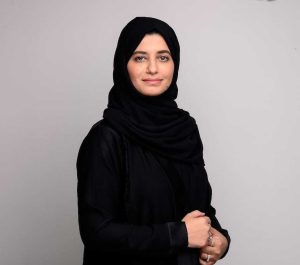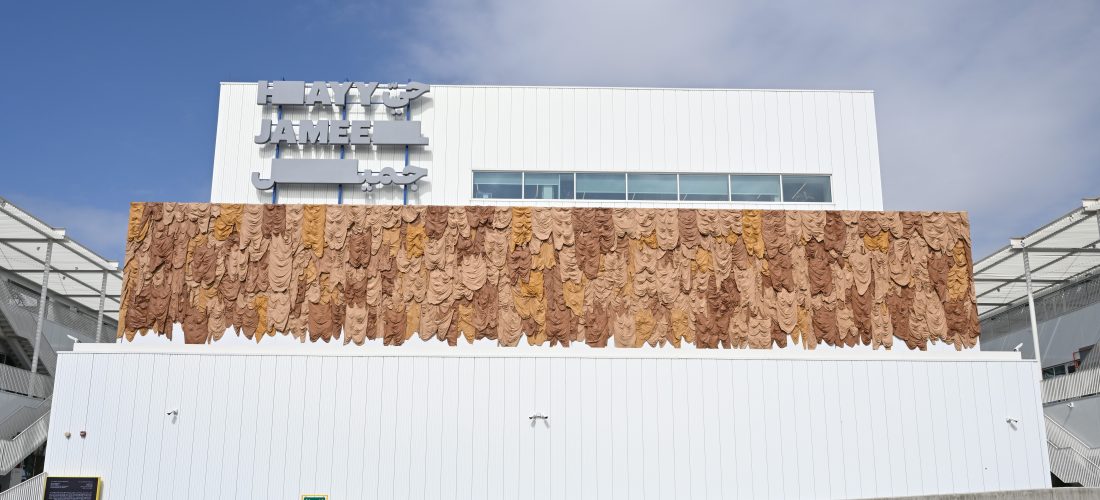The Hayy Jameel Façade Commission is an annual programme that gives one artist the opportunity to develop a major public work for the 25-metre “canvas” on the front of the building — a feature integral to the architectural intent. The annual commission gives Saudi and Saudi-based artists the opportunity to develop a major new work for the public realm.
Clay is a primal material, bound up in creation stories the world over and used for millennia by humans to construct dwellings and quotidian objects. In The Cell, Zahrah draws on this long history and mythology to create a sculptural work that speaks to the common origins and the shared histories of humanity across time. Zahrah has long explored ideas around our relationships to one another and to the earth through her poetic practice – often utilising tactile and natural materials. In The Cell, an artwork composed of hundreds of meticulously draped and layered fabric pieces moulded with clay, a patchwork of earthy tones and textures emerges. This tapestry represents and speaks to both the individual and the collective – celebrating the ways in which each individual is a necessary part of the collective while calling for a harmonious and diverse congregation of all people who together are able to build a more compassionate world.
This year, the Façade Commission’s jury – included Saudi artist Manal Aldowyan; Deputy Director (Arts) at Art Jameel Nora Razian; Curator (International Art) at Tate Modern Nabila Abdel Nabi; and long-time Chair of Modern and Contemporary Arts at The Met Museum, Sheena Wagstaff.
The jury also opted to award a Jury Special Mention to three of the shortlisted proposals in recognition of their originality and bold vision. Congratulations go to:
- Basmah Felemban, Abeer Sultan and Mubarak Mahdi
- Sarah Al Abdali
The Hayy Jameel Facade Commission is kindly supported by Abdul Latif Jameel Motors – Lexus KSA.

About Zahrah Al-Ghamdi
Dr. Zahrah Al-Ghamdi stands as a fusion of contemporary artist and esteemed academic, renowned for her exploration of memory and history intertwined with traditional architecture. Her artistry unfolds as intricate narratives of cultural identity, memory, and loss, manifesting in meticulously crafted site-specific works composed from earth, clay, rocks, leather, and water. In her capacity as an Associate Professor of Visual Art and Design at the University of Jeddah, Zahrah infuses her unique artistic insights and experiences into a nurturing educational journey for her students.

 Shop
Shop
